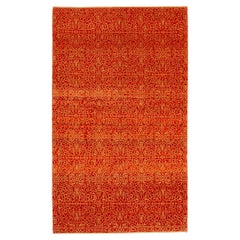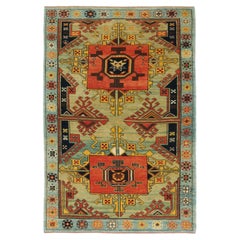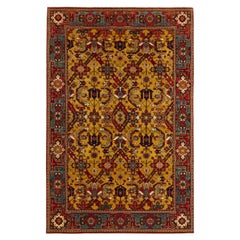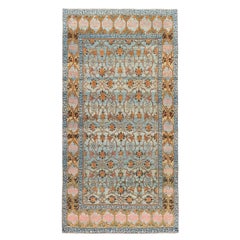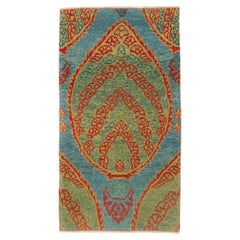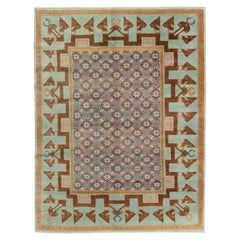Ararat Rugs Turkish Rugs
21st Century and Contemporary Turkish Revival Ararat Rugs Turkish Rugs
Wool, Natural Fiber, Organic Material
21st Century and Contemporary Turkish Oushak Ararat Rugs Turkish Rugs
Wool, Natural Fiber, Organic Material
21st Century and Contemporary Turkish Oushak Ararat Rugs Turkish Rugs
Wool, Natural Fiber, Organic Material
21st Century and Contemporary Turkish Revival Ararat Rugs Turkish Rugs
Wool, Natural Fiber, Organic Material
21st Century and Contemporary Turkish Revival Ararat Rugs Turkish Rugs
Wool, Natural Fiber, Organic Material
21st Century and Contemporary Turkish Revival Ararat Rugs Turkish Rugs
Wool, Natural Fiber, Organic Material
21st Century and Contemporary Turkish Revival Ararat Rugs Turkish Rugs
Wool, Natural Fiber, Organic Material
21st Century and Contemporary Turkish Revival Ararat Rugs Turkish Rugs
Wool, Natural Fiber, Organic Material
21st Century and Contemporary Turkish Revival Ararat Rugs Turkish Rugs
Wool, Natural Fiber, Organic Material
21st Century and Contemporary Turkish Revival Ararat Rugs Turkish Rugs
Wool, Natural Fiber, Organic Material
21st Century and Contemporary Turkish Revival Ararat Rugs Turkish Rugs
Wool, Natural Fiber, Organic Material
21st Century and Contemporary Turkish Revival Ararat Rugs Turkish Rugs
Organic Material, Natural Fiber, Wool
21st Century and Contemporary Turkish Revival Ararat Rugs Turkish Rugs
Wool, Natural Fiber, Organic Material
21st Century and Contemporary Turkish Revival Ararat Rugs Turkish Rugs
Wool, Natural Fiber, Organic Material
21st Century and Contemporary Turkish Revival Ararat Rugs Turkish Rugs
Organic Material, Natural Fiber, Wool
21st Century and Contemporary Turkish Revival Ararat Rugs Turkish Rugs
Wool, Natural Fiber, Organic Material
21st Century and Contemporary Turkish Revival Ararat Rugs Turkish Rugs
Wool, Natural Fiber, Organic Material
21st Century and Contemporary Turkish Revival Ararat Rugs Turkish Rugs
Wool, Natural Fiber, Organic Material
21st Century and Contemporary Turkish Revival Ararat Rugs Turkish Rugs
Organic Material, Natural Fiber, Wool
21st Century and Contemporary Turkish Oushak Ararat Rugs Turkish Rugs
Wool, Natural Fiber, Organic Material
2010s Turkish Revival Ararat Rugs Turkish Rugs
Wool, Natural Fiber, Organic Material
21st Century and Contemporary Turkish Revival Ararat Rugs Turkish Rugs
Wool, Natural Fiber, Organic Material
21st Century and Contemporary Turkish Revival Ararat Rugs Turkish Rugs
Organic Material, Natural Fiber, Wool
21st Century and Contemporary Turkish Oushak Ararat Rugs Turkish Rugs
Wool, Natural Fiber, Organic Material
21st Century and Contemporary Turkish Revival Ararat Rugs Turkish Rugs
Organic Material, Natural Fiber, Wool
21st Century and Contemporary Turkish Revival Ararat Rugs Turkish Rugs
Wool, Natural Fiber, Organic Material
21st Century and Contemporary Turkish Oushak Ararat Rugs Turkish Rugs
Wool, Natural Fiber, Organic Material
21st Century and Contemporary Turkish Revival Ararat Rugs Turkish Rugs
Wool, Natural Fiber, Organic Material
21st Century and Contemporary Turkish Revival Ararat Rugs Turkish Rugs
Wool, Natural Fiber, Organic Material
21st Century and Contemporary Turkish Revival Ararat Rugs Turkish Rugs
Wool, Natural Fiber, Organic Material
21st Century and Contemporary Turkish Revival Ararat Rugs Turkish Rugs
Wool, Natural Fiber, Organic Material
21st Century and Contemporary Turkish Revival Ararat Rugs Turkish Rugs
Wool, Natural Fiber, Organic Material
21st Century and Contemporary Turkish Revival Ararat Rugs Turkish Rugs
Wool, Natural Fiber, Organic Material
21st Century and Contemporary Turkish Revival Ararat Rugs Turkish Rugs
Wool, Natural Fiber, Organic Material
21st Century and Contemporary Turkish Revival Ararat Rugs Turkish Rugs
Wool, Natural Fiber, Organic Material
21st Century and Contemporary Turkish Revival Ararat Rugs Turkish Rugs
Wool, Natural Fiber, Organic Material
21st Century and Contemporary Turkish Revival Ararat Rugs Turkish Rugs
Wool, Natural Fiber, Organic Material
21st Century and Contemporary Turkish Oushak Ararat Rugs Turkish Rugs
Wool, Natural Fiber, Organic Material
21st Century and Contemporary Turkish Revival Ararat Rugs Turkish Rugs
Wool, Natural Fiber, Organic Material
21st Century and Contemporary Turkish Oushak Ararat Rugs Turkish Rugs
Wool, Natural Fiber, Organic Material
21st Century and Contemporary Turkish Oushak Ararat Rugs Turkish Rugs
Wool, Natural Fiber, Organic Material
21st Century and Contemporary Turkish Revival Ararat Rugs Turkish Rugs
Wool, Natural Fiber, Organic Material
21st Century and Contemporary Turkish Revival Ararat Rugs Turkish Rugs
Wool, Natural Fiber, Organic Material
21st Century and Contemporary Turkish Oushak Ararat Rugs Turkish Rugs
Wool, Natural Fiber, Organic Material
21st Century and Contemporary Turkish Revival Ararat Rugs Turkish Rugs
Wool, Natural Fiber, Organic Material
21st Century and Contemporary Turkish Revival Ararat Rugs Turkish Rugs
Wool, Natural Fiber, Organic Material
21st Century and Contemporary Turkish Revival Ararat Rugs Turkish Rugs
Wool, Natural Fiber, Organic Material
21st Century and Contemporary Turkish Revival Ararat Rugs Turkish Rugs
Wool, Natural Fiber, Organic Material
21st Century and Contemporary Turkish Revival Ararat Rugs Turkish Rugs
Wool, Natural Fiber, Organic Material
21st Century and Contemporary Turkish Revival Ararat Rugs Turkish Rugs
Wool, Natural Fiber, Organic Material
21st Century and Contemporary Turkish Revival Ararat Rugs Turkish Rugs
Wool, Natural Fiber, Organic Material
21st Century and Contemporary Turkish Revival Ararat Rugs Turkish Rugs
Wool, Natural Fiber, Organic Material
21st Century and Contemporary Turkish Revival Ararat Rugs Turkish Rugs
Wool, Natural Fiber, Organic Material
21st Century and Contemporary Turkish Revival Ararat Rugs Turkish Rugs
Wool, Natural Fiber, Organic Material
21st Century and Contemporary Turkish Revival Ararat Rugs Turkish Rugs
Wool, Natural Fiber, Organic Material
21st Century and Contemporary Turkish Revival Ararat Rugs Turkish Rugs
Wool, Natural Fiber, Organic Material
21st Century and Contemporary Turkish Revival Ararat Rugs Turkish Rugs
Wool, Natural Fiber, Organic Material
21st Century and Contemporary Turkish Revival Ararat Rugs Turkish Rugs
Wool, Natural Fiber, Organic Material
21st Century and Contemporary Turkish Revival Ararat Rugs Turkish Rugs
Wool, Natural Fiber, Organic Material
21st Century and Contemporary Turkish Revival Ararat Rugs Turkish Rugs
Wool, Natural Fiber, Organic Material
